© 2018 Dr. M. Sheppard
Houses
Traditional Houses, of which there were still many in the 1970s and 1980s, were made of locally available materials -
Cement brick and cement floored zinc roofed oblong houses were becoming popular as they required much less maintenance. Family yards often contained a mixture of different types of houses
Some families were also installing water taps in their yards, but often these would fail to produce water in the dry season and water would need to be fetched from the various communal village water taps.
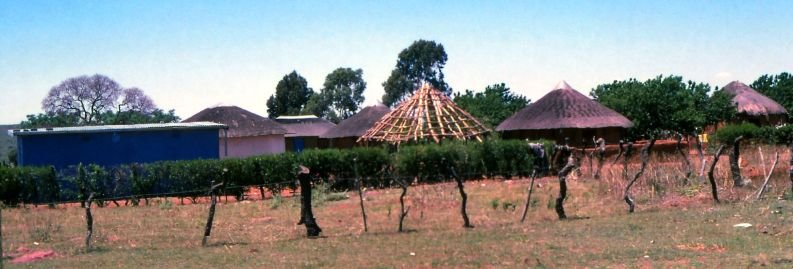
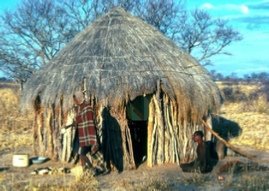
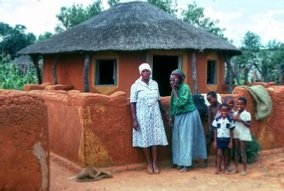
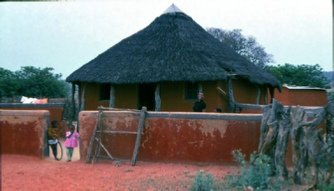
Rondavel in the Kalahari -
Typical rodavels in Kanye. These are both made from bricks made clay mud mixed with cattle dung. The walls are then plastered with a similar mixture. The floors are made of a foundation of cattle dung and clay and then sealed with cattle dung. The foundation needs to be renewed every 4-
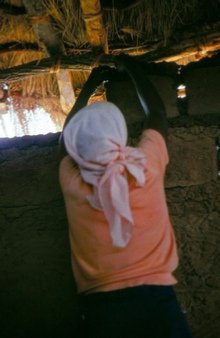
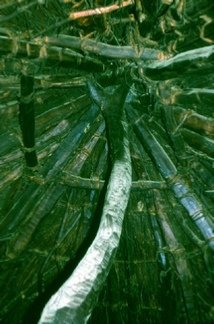
Repairing leaks in the thatch
View looking up into the centre of the roof inside the rondavel. Many of the older rondavels have a central strong wooden post inside supporting the roof. The main rafters to support the thatched roof are attached to this.
Another style has the roof supported by the external wooden posts
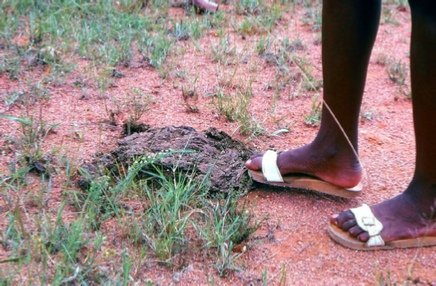
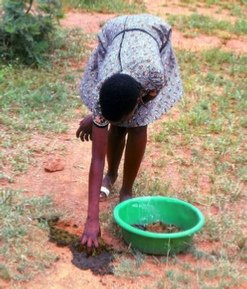
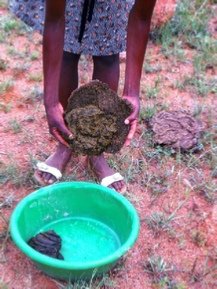
Traditional Floors
A cattle dung finish that must be maintained weekly is made on a mud and concrete base. First the cattle dung must be collected
Testing with a foot -
Collecting into a bowl to take home to make the floor
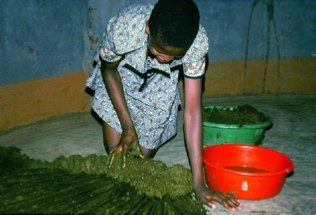
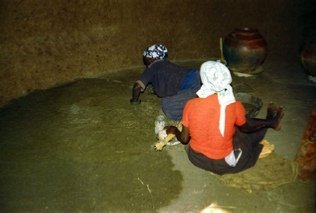
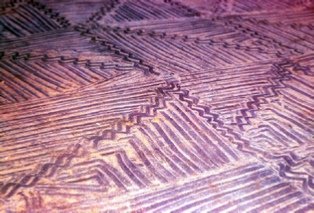
Collected cattle dung emptied onto floor & worked with a little water
Then spread over the floor evenly
Often elaborate “finger”patterns formed to decorate the floor
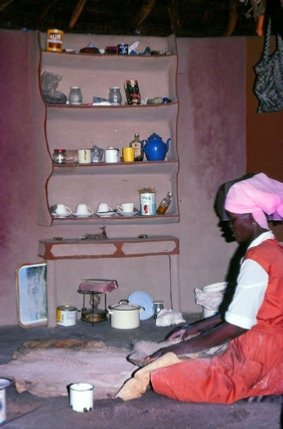
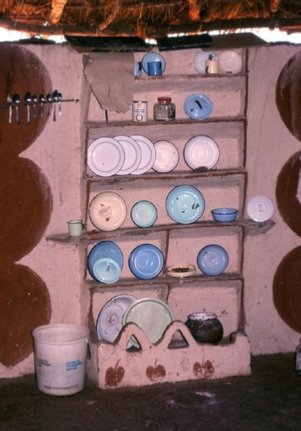
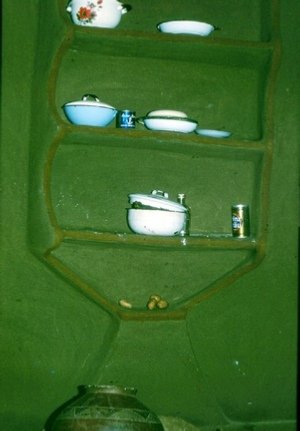
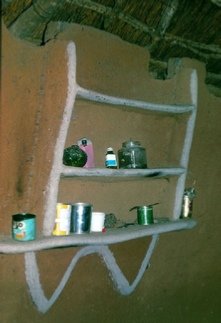
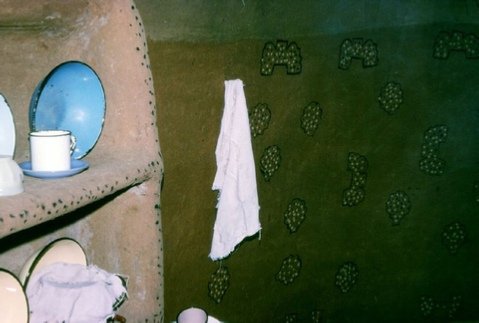
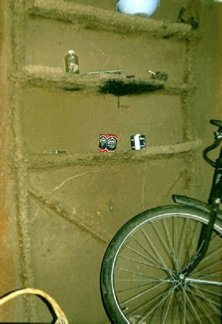
Traditional Mud Shelves -
These beautifully made functional and decorated mud shelves were still in use in some rondavels. This woman was very talented at constructing and maintaining them as like the traditional flooring they need constant maintenance
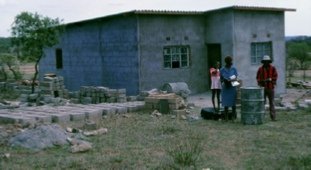
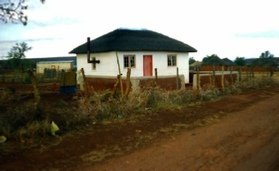
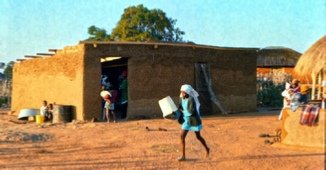
Other types of houses
2-
Mud bricked house to have zinc roof house under construction
Cement brick house with zinc roof.